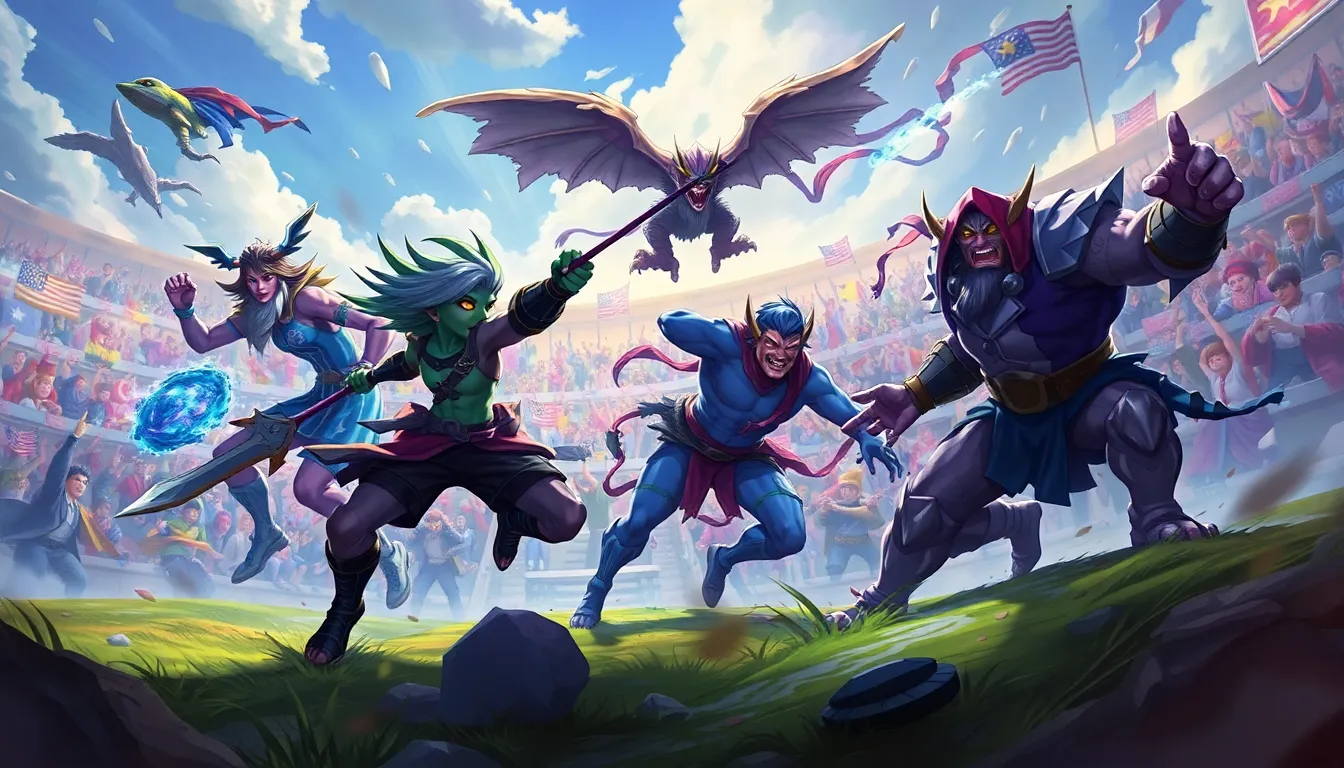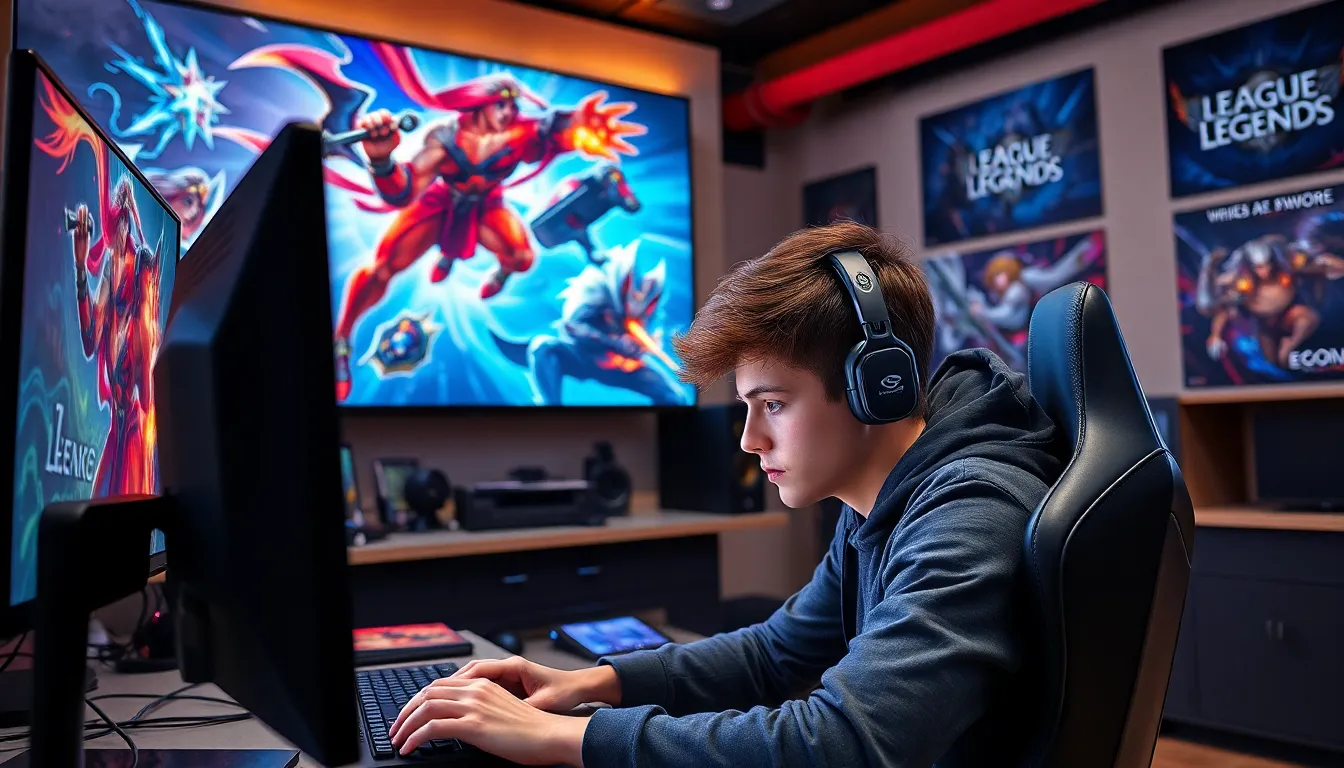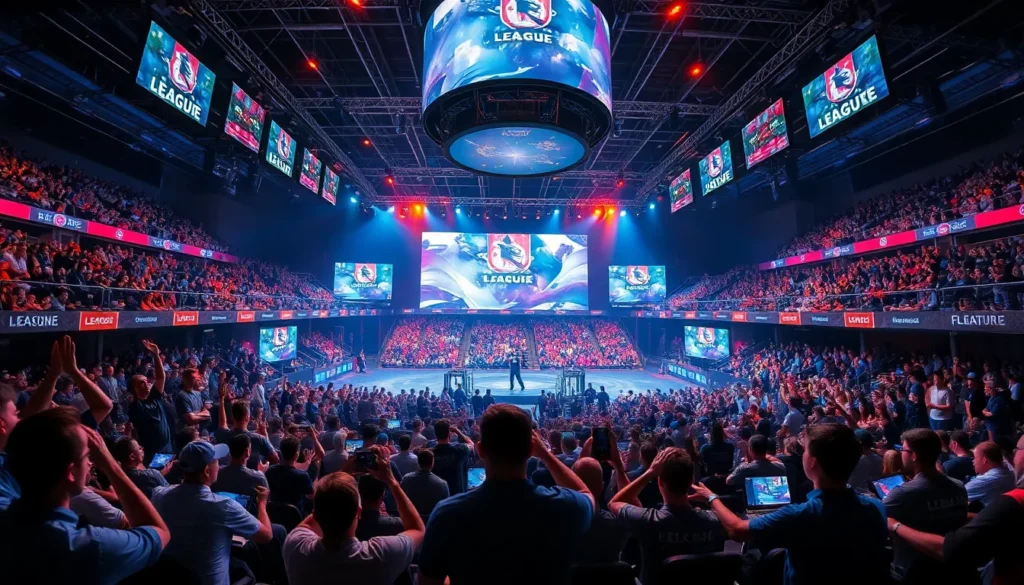In the ever-evolving world of League of Legends, champions rise and fall like the tides. One moment, a character’s dominating the Rift, and the next, they’re getting the classic “nerf bat” treatment. It’s a saga as old as time, filled with drama, heartbreak, and the occasional meme-worthy moment.
Dive into the fascinating history of nerfs, where balance changes aren’t just numbers on a patch note but the lifeblood of gameplay evolution. Whether it’s the infamous adjustments that left players crying into their keyboards or the subtle tweaks that barely raised an eyebrow, each nerf tells a story. Join the journey through this chaotic landscape, where every change sparks debates, laughter, and sometimes even a little rage. Get ready to explore the wild ride of League nerf history—because who doesn’t love a good underdog story?
Table of Contents
ToggleOverview of League Nerf History
League of Legends has a rich history of nerfs that reflects the ongoing evolution of the game. Nerfs serve to balance champions, often altering their abilities or statistics significantly. These changes can transform a dominant champion into a less effective one, impacting player strategies and game outcomes.
In the early years, champions like Ryze and Katarina experienced notable nerfs due to their overwhelming power. Ryze’s ability to dish out damage while being hard to kill drew considerable attention, leading to several significant adjustments. Similarly, Katarina’s ability to reset her cooldowns created frustrating experiences for opponents, prompting developers to implement necessary nerfs.
Recent patches reveal extensive changes. For example, the 11.8 patch introduced extensive adjustments to several champions. Aphelios and Gwen faced extensive balance changes due to their high win rates and pick rates at the professional level. The goal was to create a balanced competitive environment that offers all champions a fair chance.
Nerf reactions often evoke passionate responses from the community. Players might express frustration, humor, or even cheer when their favorite champions receive balance adjustments. This reaction highlights the attachment players feel toward their champions and reveals the tension between personal enjoyment and game balance.
Several champions have undergone multiple nerfs over the years, illustrating the delicate balance developers must maintain. Champions like Darius and Zed illustrate this phenomenon. Both experienced a rollercoaster of buffs and nerfs, demonstrating the continuous effort to refine gameplay.
Nerfs in League of Legends encapsulate a complex relationship between player experience and game balance. Each adjustment contributes to the narrative of the game’s development, shaping how players interact with champions over time.
Major Nerfs Across Different Seasons

Significant nerfs in League of Legends have shaped gameplay and champion viability. Each season introduced pivotal balance changes that impacted competitive play.
Season 1: The Beginning of Balance Changes
Nerfs originated in Season 1 with champions like Ryze dominating the meta. Ryze’s spell ratios underwent a reduction, targeting his overpowering potential. This season laid the groundwork for future adjustments as developers aimed to establish a balanced environment. Additionally, characters like Katarina faced substantial cooldown increases, reducing her burst damage capabilities. These adjustments marked the beginning of a continuous balancing act in the game’s evolution.
Season 3: Rise of the Dominant Champions
Season 3 showcased the emergence of powerful champions and correspondingly significant nerfs. Champions like Zed and Renekton became highly favored, leading to increased scrutiny from developers. Both champions received adjustments that limited their sustain and burst potential. Zed’s energy costs rose, diminishing his ability to spam abilities. Renekton’s damage output saw reductions, creating room for other champions to shine. These targeted nerfs reflected the developers’ commitment to maintaining a competitive and diverse champion pool.
Season 5: The Introduction of New Mechanics
Season 5 introduced new mechanics that necessitated a fresh round of nerfs. Characters like Lee Sin and Gragas underwent crucial adjustments due to their strong presence in both casual and competitive play. Lee Sin saw his skill ceiling raised while his damage and sustain fell. Gragas experienced similar treatment, with nerfs to his ultimate and base statistics to curb his dominance. By addressing these champions early in the season, developers aimed to refine gameplay while promoting a diverse meta.
Impact of Nerfs on Gameplay
Nerfs play a critical role in shaping gameplay in League of Legends. Adjustments to champion abilities and statistics impact how players strategize and engage in matches.
Champion Viability
One major effect of nerfs is altering champion viability. When a champion receives a significant nerf, their effectiveness in competitive play often declines. For example, changes to champions like Ryze and Zed reduced their dominance in games, pushing players to explore alternatives. A champion that once dominated becomes less favored due to a loss in power or utility. As a result, players adapt by switching to other champions that may fill the gaps left by nerfed characters. This shift in champion selection promotes diversity in gameplay and forces continuous learning for players. Ultimately, nerfed champions may find themselves in lower tiers, affecting team compositions in both casual and professional settings.
Meta Shifts
Nerfs also induce shifts in the meta. When developers implement changes, the competitive landscape often responds dynamically. For instance, adjustments made in Season 3 significantly affected champions like Renekton, prompting a reevaluation of team strategies. This reevaluation leads players to experiment with new tactics, fostering fresh gameplay experiences. Each patch introduces opportunities for previously underused champions to emerge as viable options. Players must stay informed about these changes to remain competitive. Consequently, the game evolves, creating a constantly changing environment where adaptability becomes essential.
Community Reactions to Nerfs
Community reactions to nerfs in League of Legends range from positive to negative, showcasing the diverse perspectives players hold regarding balance changes.
Positive Feedback
Players often appreciate nerfs that promote a healthier game environment. Many see these adjustments as necessary to curb dominant champions and enhance competition. For instance, a significant nerf to a champion perceived as overpowered may open up the meta, allowing previously less favored champions to shine. This encourages strategic diversity and rewards adaptability among players. Engagement within the community typically reflects excitement for new champion viability, which revitalizes interest in the game. Such shifts can lead to discussions around innovative strategies and team compositions that were not previously considered.
Negative Backlash
On the other hand, community backlash often arises in response to perceived unfair nerfs. Players may express frustration when a beloved champion experiences drastic changes, especially if it feels unwarranted. Strong reactions frequently surface on platforms like Reddit and Twitter, filled with detailed analysis and heated debates. The emotional attachment players have to their champions can lead to vocal outcry, influencing developer decisions for future patches. Additionally, some players argue that nerfs can undermine skill expression, as champions become less effective, diminishing the satisfaction derived from mastering them. This ongoing discourse reflects the constant push and pull between balance and personal connection to champion identities.
The history of nerfs in League of Legends is a testament to the game’s evolving nature. Each adjustment not only impacts champion viability but also influences player strategies and community dynamics. As developers strive for balance, they navigate the delicate relationship between gameplay enjoyment and competitive integrity.
Players’ reactions to these changes add another layer of complexity to the narrative, showcasing the passion and investment within the community. Ultimately, nerfs serve as a vital mechanism for fostering diversity in gameplay and ensuring that the League of Legends experience remains fresh and engaging for all.




